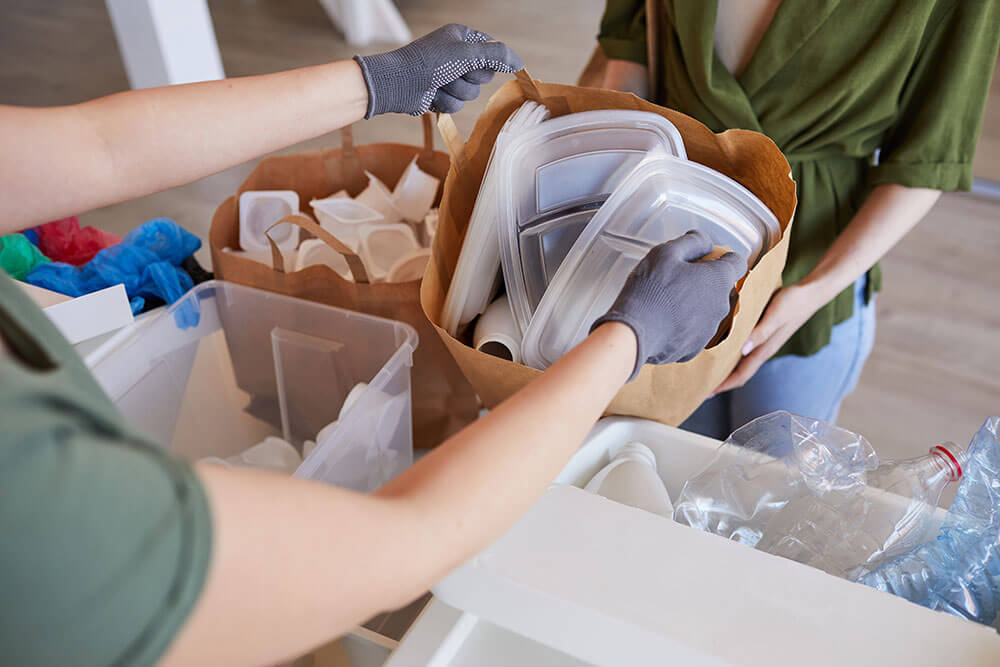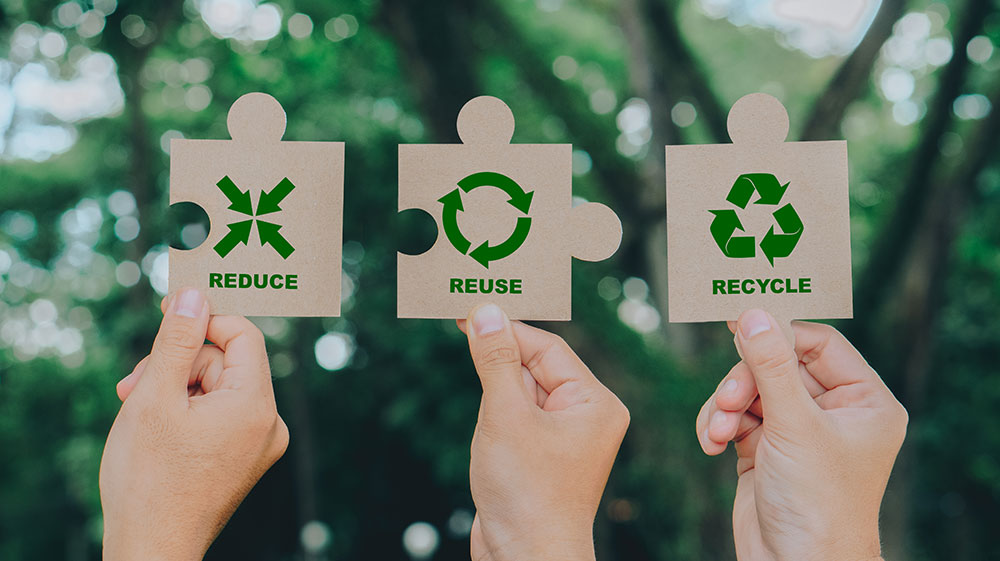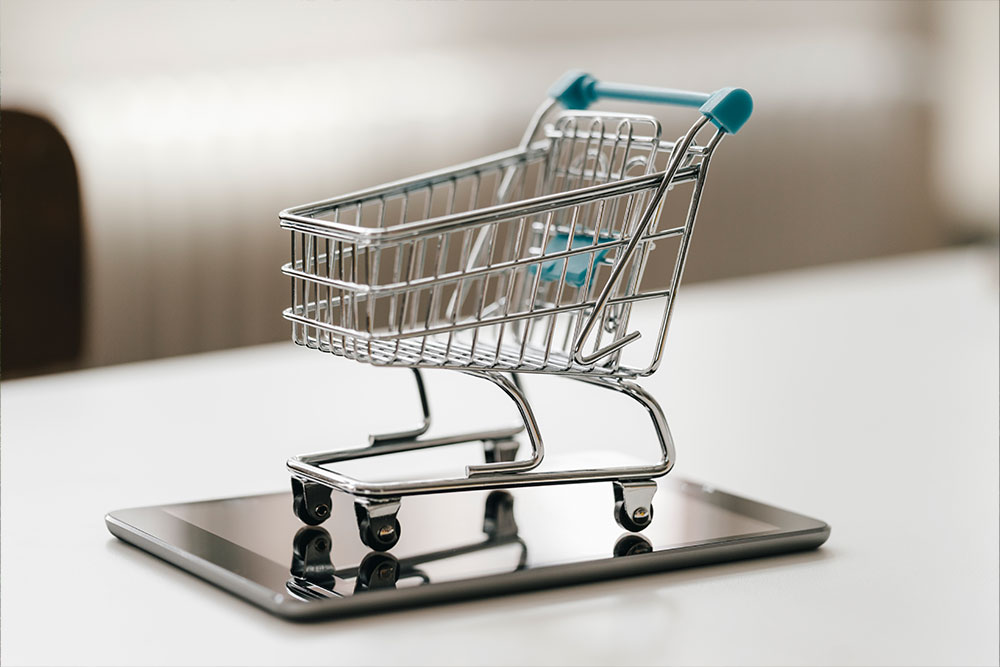 Plastic Pollution and Recycling
Plastic Pollution and Recycling
 Photo by seventyfourimages of Envato Elements
Photo by seventyfourimages of Envato Elements
In a society that is becoming increasingly aware of the adverse environmental effects of excessive plastic packaging, it is vital for consumers to take responsibility and adopt sustainable practices in their daily lives.
Waste management plays a critical aspect in this endeavour. As an individual or an organization, there are simple yet effective ways to ensure solid waste management to increase recycling rates while promoting a healthier and eco-friendly lifestyle.
In this article, we’ll explore the top five best waste management hacks that you can incorporate into your daily routine.
Hack #1: Reduce, reuse, and recycle
 Photo by witsaruts of Envato Elements
Photo by witsaruts of Envato Elements
In school, we were taught the importance of the famous three Rs: reduce, reuse, and recycle. They serve as the cornerstones of effective solid waste management1. Cliche as it may sound, these principles curb excessive plastic packaging and contribute to a greener planet.
Reduce
Be mindful of what you consume. Avoid buying single-use items or products with too much plastic packaging. Actively seek out products and brands with minimal or reusable packaging. By being conscious of your consumption of single-use plastic, you can contribute to minimizing excessive plastic packaging waste.
Reuse
Reusing items is the best way to reduce waste. When cleaning your home, consider if any items can be repurposed. Items such as glass jars can be reused as food containers, old clothes can be upcycled, and furniture can be refurbished instead of being discarded. You can also consider making DIY crafts out of these items.
Recycle
Recycling is the most effective way to conserve resources. Separate general wastes from recyclable items for ease of disposal. This way you are increasing the recyclability of these wastes.
Plastic packaging has a high recyclability if it is kept clean. Consider cleaning these items before sending them to the junk shops. This way you are contributing to the livelihood of recycling workers while increasing the number of plastic packaging to be processed as social plastics.
Lastly, familiarize yourself with the recycling programs of your community. They usually have comprehensive recycling projects aimed to accommodate a wide range of materials such as aluminum, cardboard, glass, paper, and plastic packaging.
Hack #2: Composting does magic
 Photo By IrynaKhabliuk on EnvatoElements
Photo By IrynaKhabliuk on EnvatoElements
Composting converts organic materials to nutrient-rich soil. All your kitchen waste like rice, meats, cheeses, vegetable peels, egg shells, and other foods can be placed in the compost.
Composting reduces greenhouse gas emissions, diverts organic waste from landfills, and provides a nutritious snack for your garden2. It is a win-win solution for both the environment and your plants.
While composting is a good idea, this is best to do in organic materials. We should be reminded that not all materials should be discarded. Landfills start from stacking of small items. If not mitigated, it could result to an immaginable amount of waste.
Hack #3: Upcycle and repurpose your items
 Photo by seventyfourimages of Envato Elements
Photo by seventyfourimages of Envato Elements
Recycling and repurposing items prevents waste and showcases your creativity. Try finding a new use for old furniture, clothing, and household items instead of throwing them away.
A worn-out pair of jeans can be transformed into stylish denim shorts, or try transforming an old wooden ladder into a bookshelf.
There are endless possibilities when it comes to upcycling, and it can be an enjoyable and rewarding way to reduce plastic waste.
Hack #4: Consume smartly
 Photo by westend61 on EnvatoElements
Photo by westend61 on EnvatoElements
You can play a significant role in waste management by becoming conscious of your shopping habits.
Even before the waste enters your house, you can reduce it by becoming a smart shopper. These tips can help you reduce the amount of waste you produce while shopping:
Buy in bulk
Bulk purchases reduce the need for excessive packaging. Look for brands and stores that provide bulk bins for products like nuts, grains, and pasta. Bring your own containers to minimize waste.
Use reusable bags
Plastic is the main source of waste and pollution. Using reusable shopping bags made of fabric minimizes unnecessary waste. Always keep them in your car so you don’t forget to use them when shopping.
Shop locally and sustainably
Consider supporting local businesses in your community. More often than not, these have less packaging and a smaller carbon footprint3. You are not just helping your local economy, you’re also helping control pollution.
Hack #5: Dispose of hazardous waste properly
 Photo by nrradmin on EnvatoElements
Photo by nrradmin on EnvatoElements
There is waste that cannot be thrown away or recycled because of it contains hazardous materials. These items pose adverse effects to human health and the environment if not disposed of correctly. Some common examples are batteries, paints, chemicals, and electronic waste.
To manage hazardous waste, below are effective waste management tips:
Find a local hazardous waste disposal center
Local governments have designated facilities for the safe and proper disposal of hazardous waste4. Coordinate with your local communities for relevant information on where to drop off applicable products and packaging.
Recycle e-waste
E-waste such as old smartphones, computers, and other electronics often contain valuable materials that can be recycled. Most manufacturers have Extended Producer Responsibility (EPR) programs offering recycling initiatives5. Take advantage of these options to ensure that you are properly disposing of old electronics.
A waste free future
Effective waste management is a shared responsibility, and each of us can make a meaningful contribution to reducing waste and preserving the environment.
By adopting these waste management practices in your daily life, you not only reduce your ecological footprint, but also set a positive example for others to follow. A more sustainable future begins with the conscious choices we make today, and these hacks are a great place to start.




